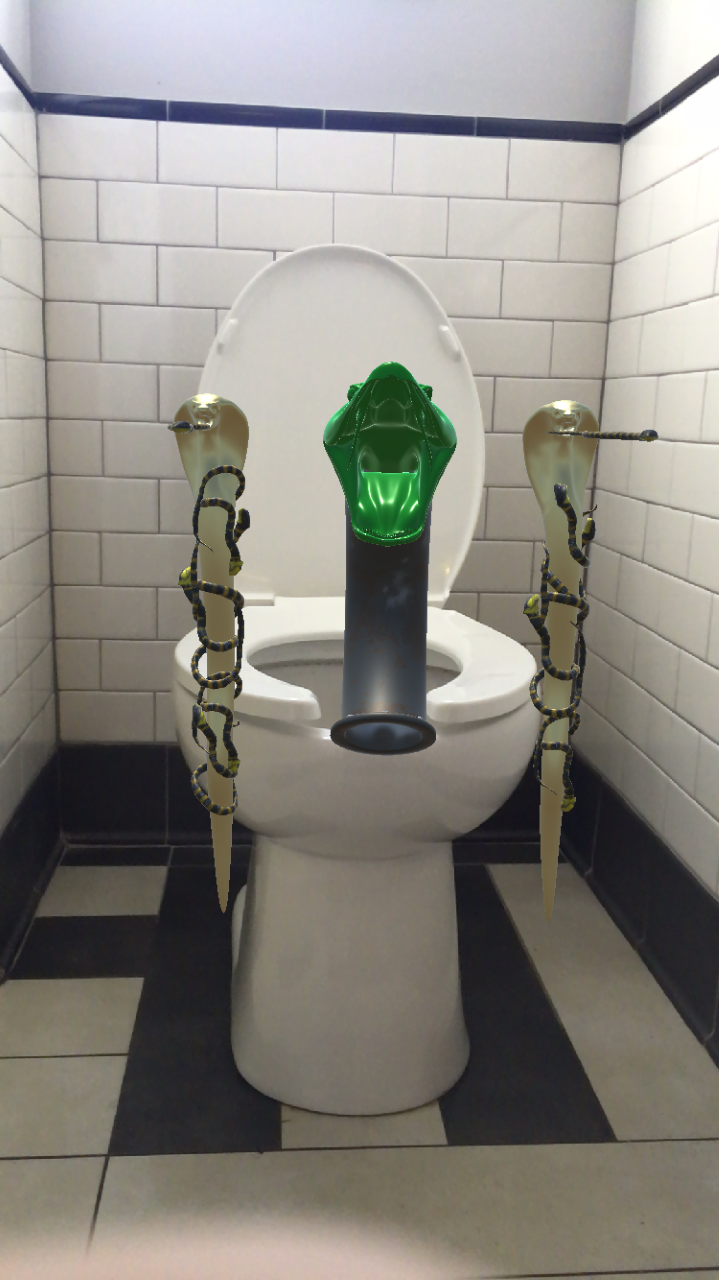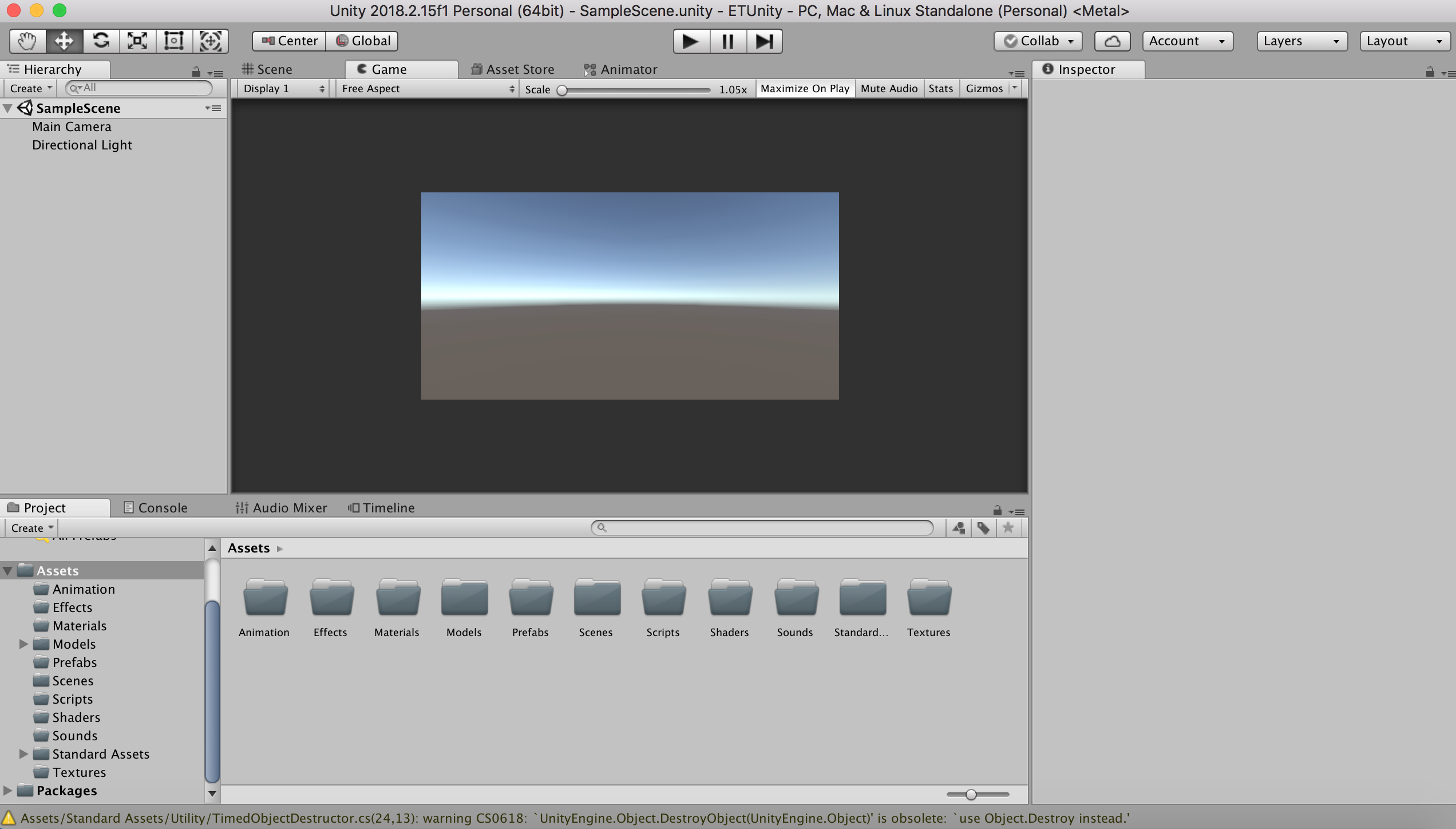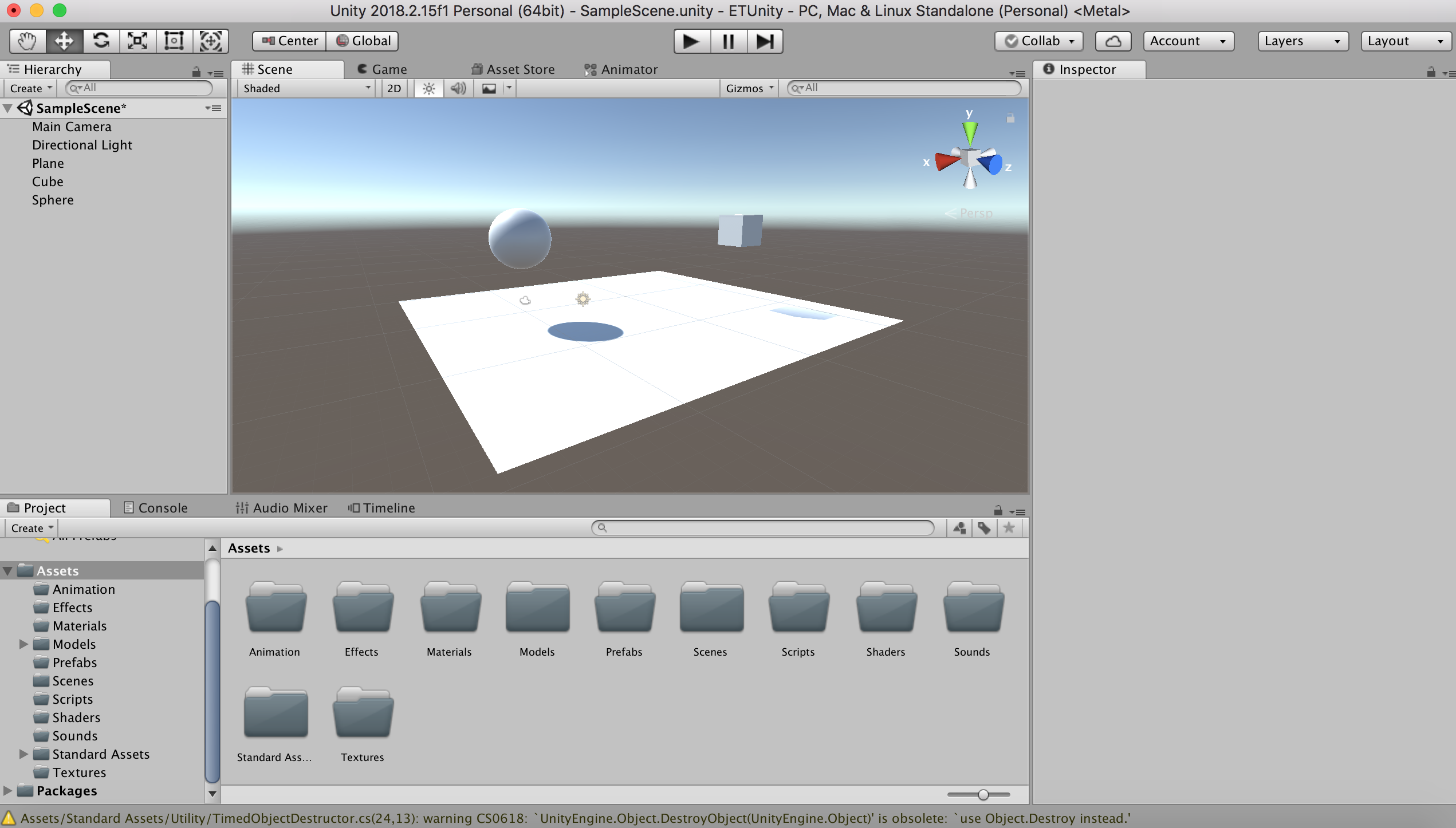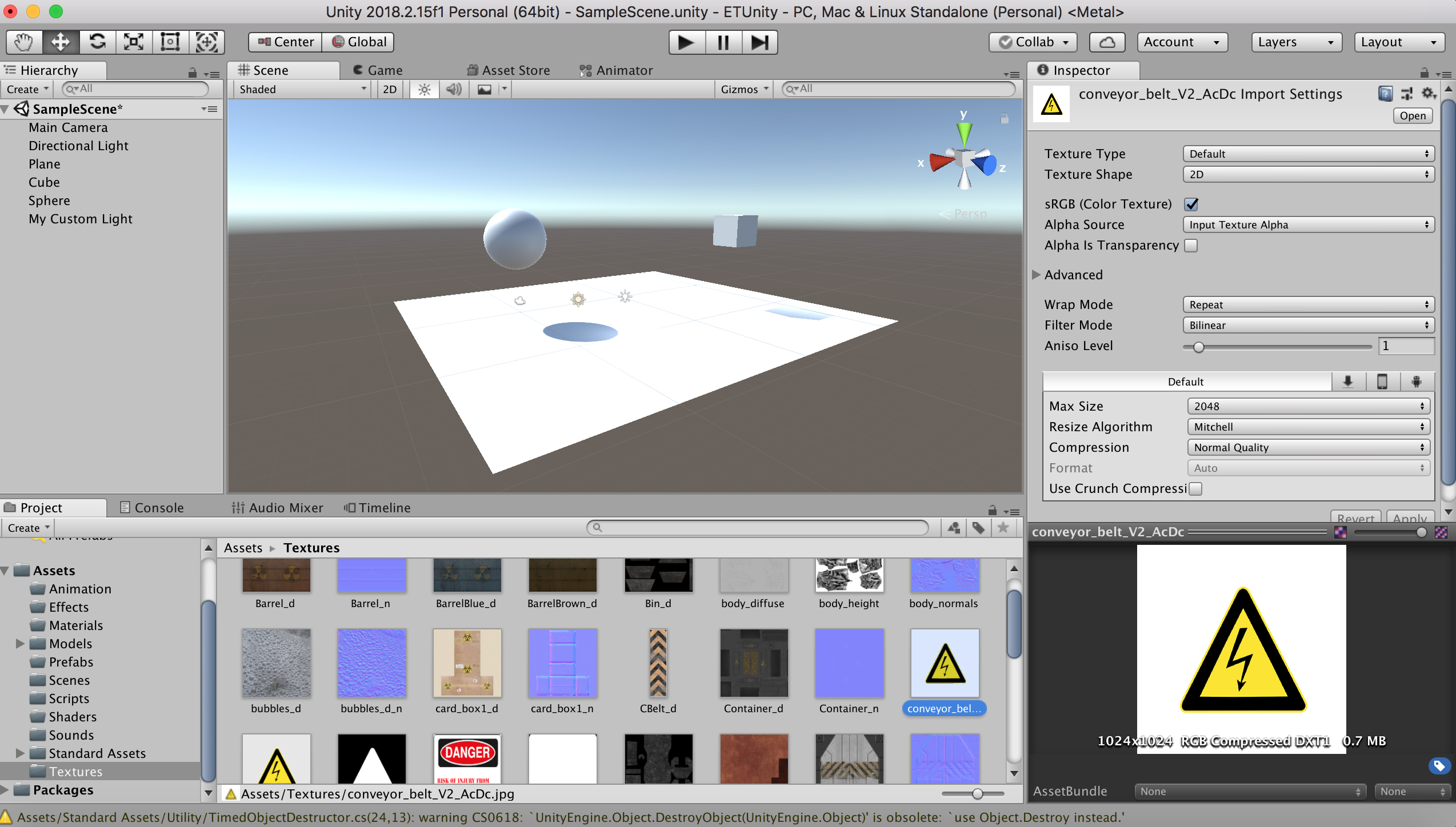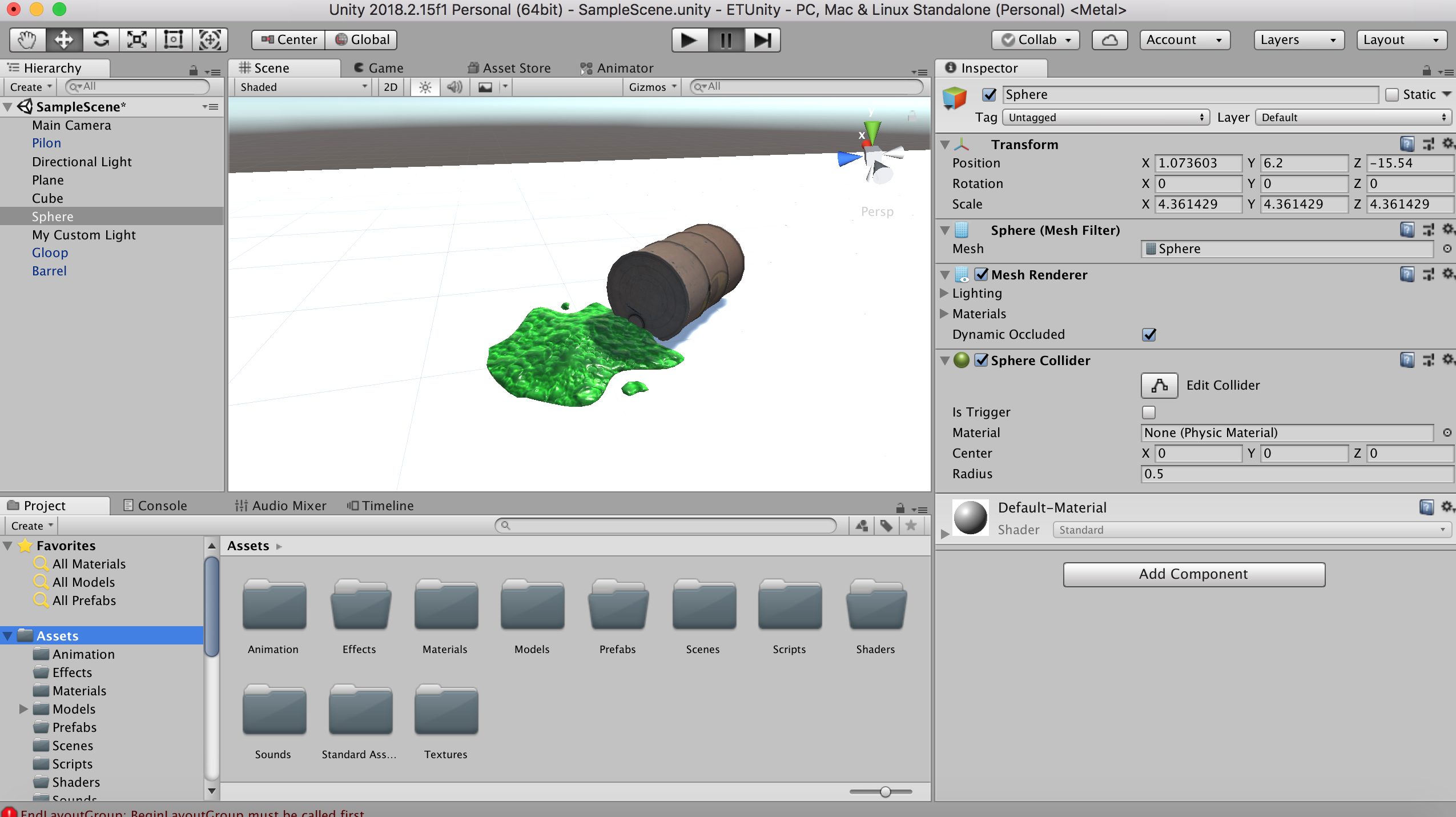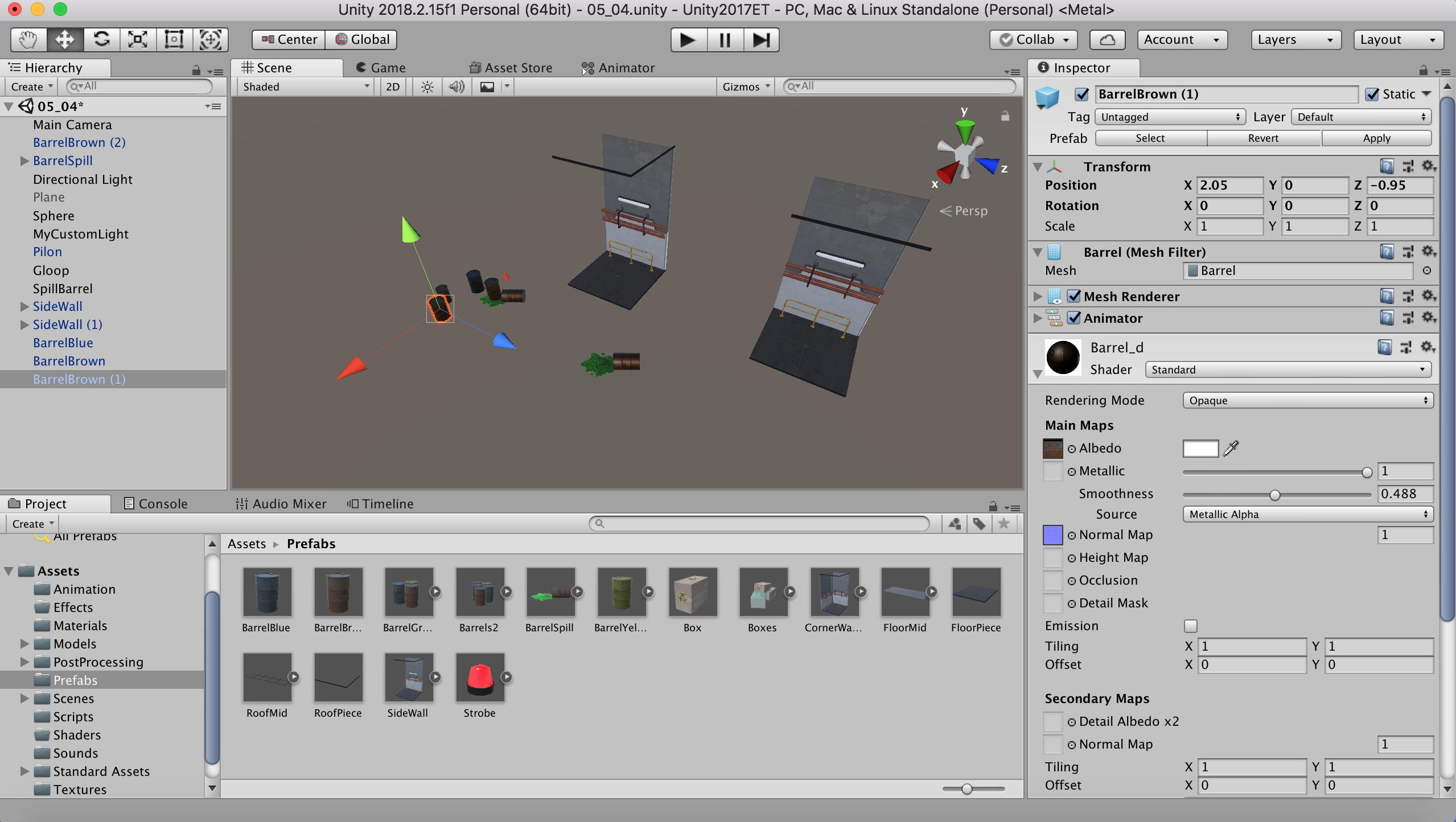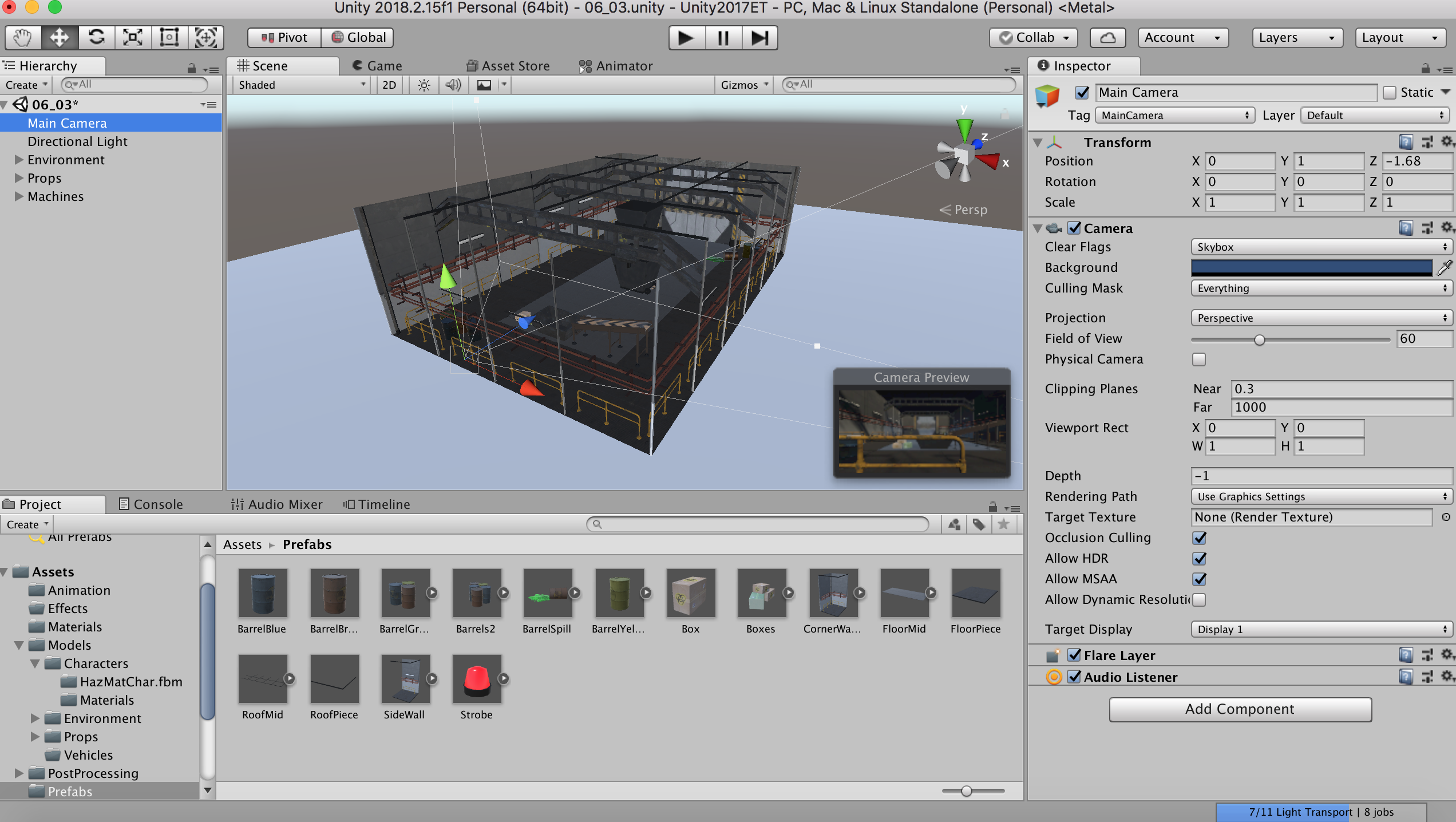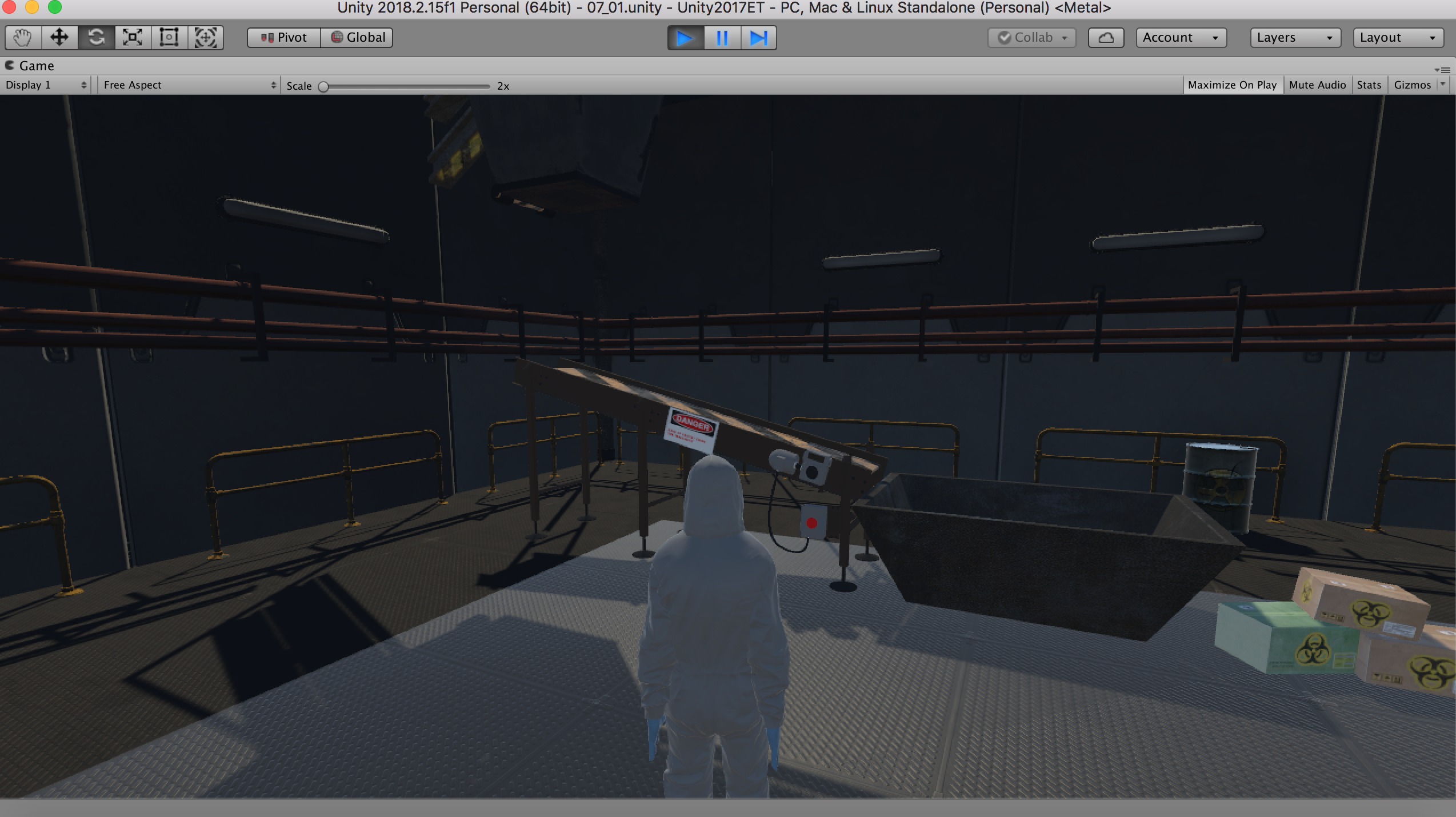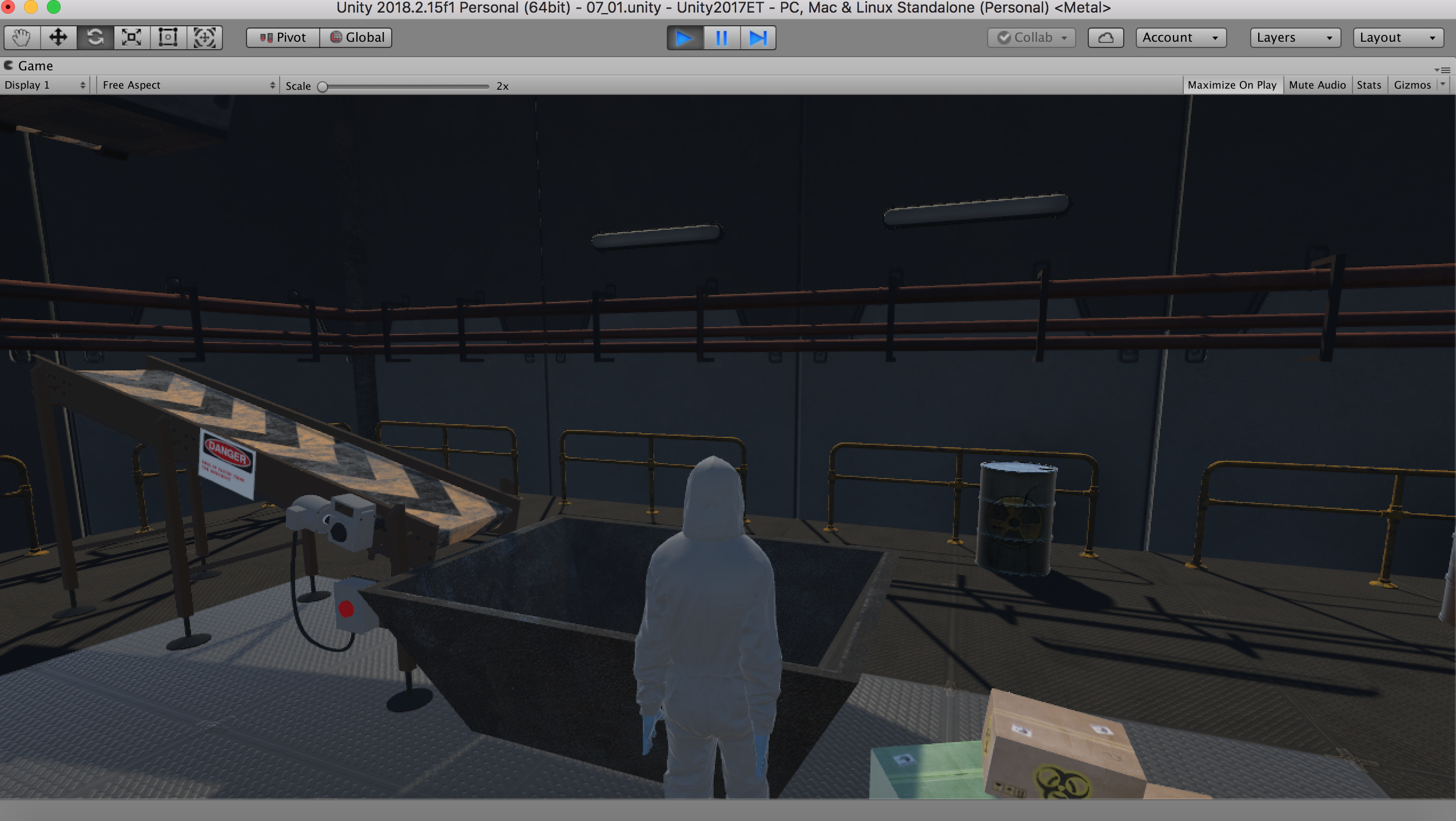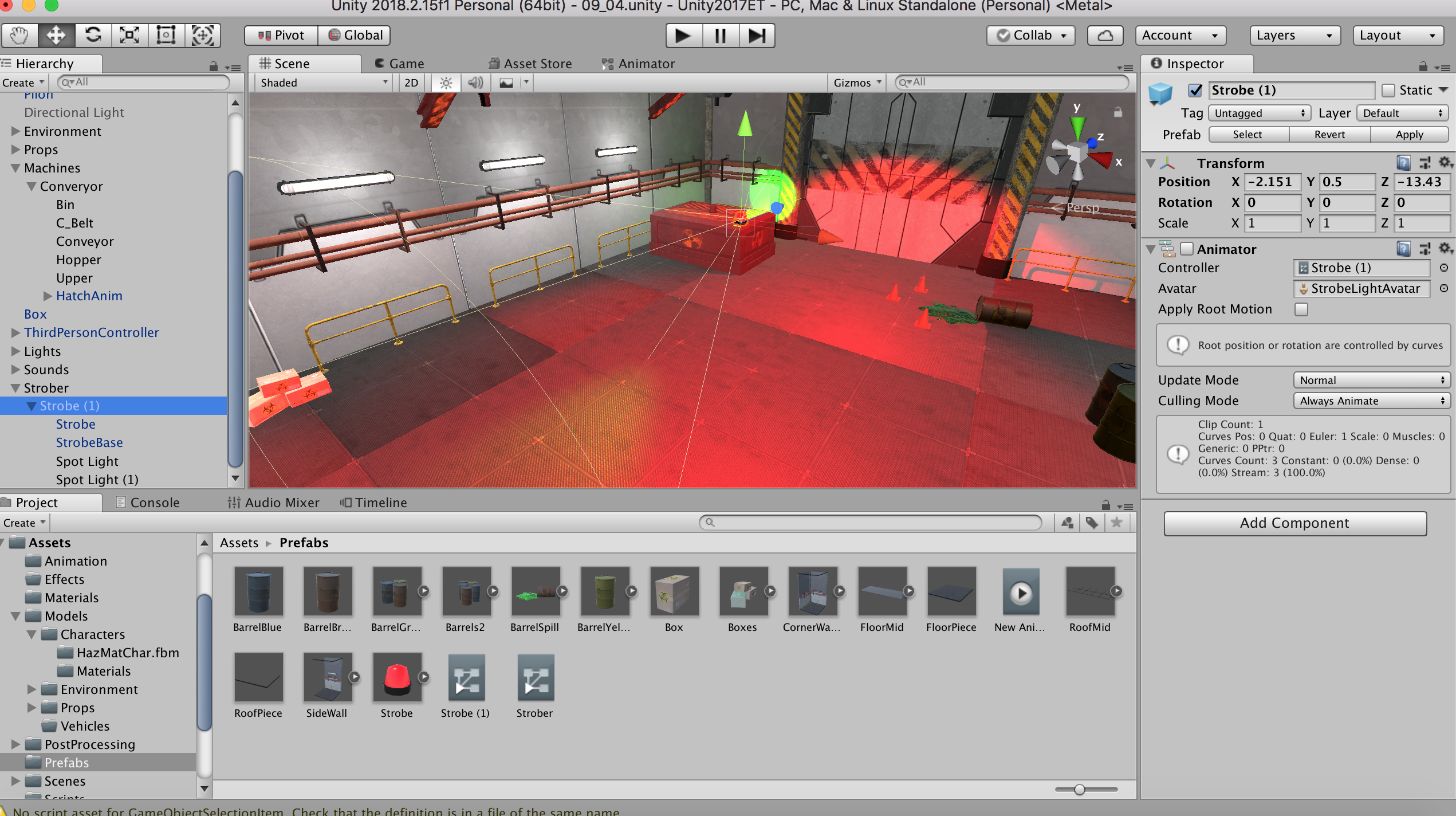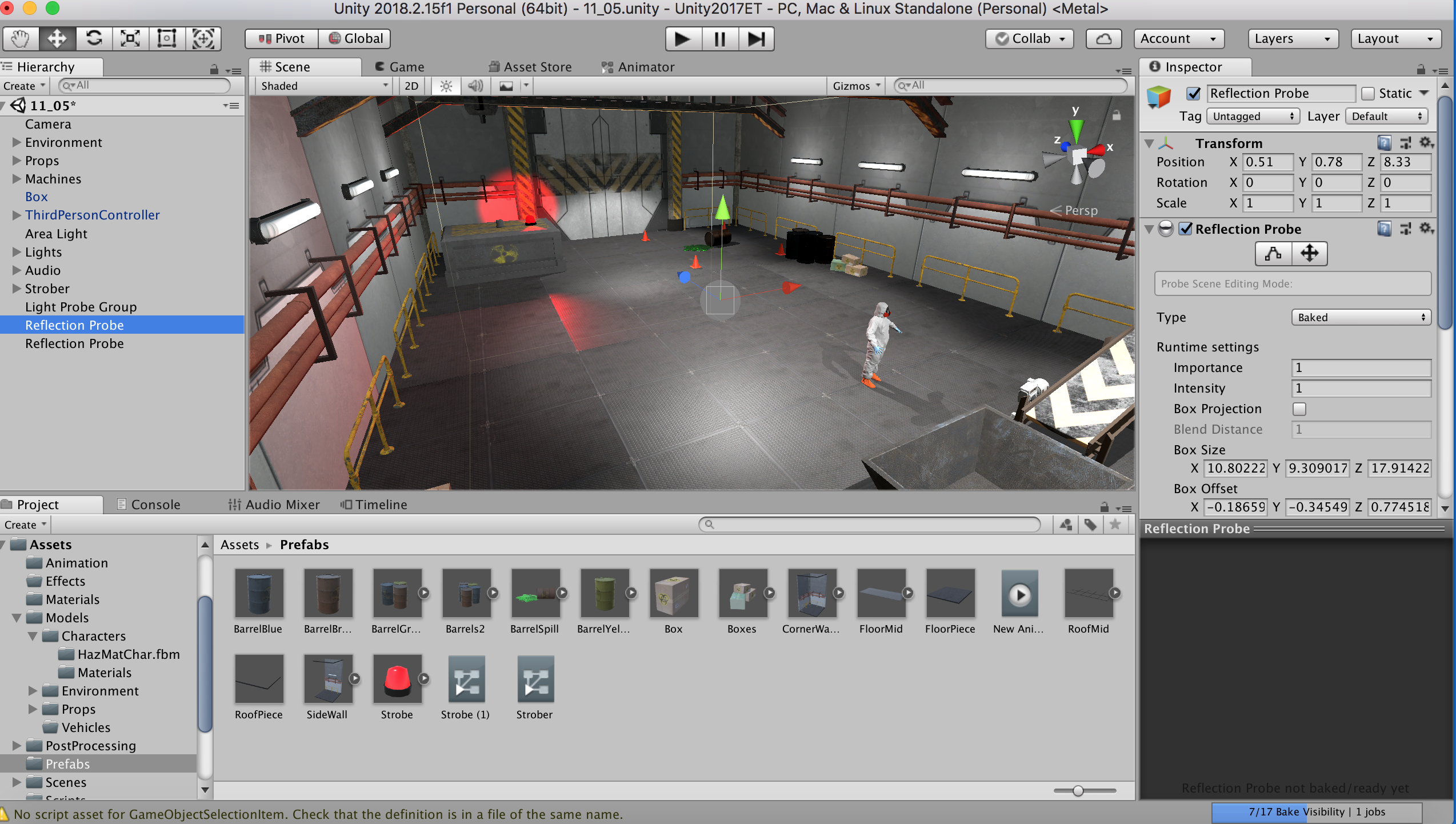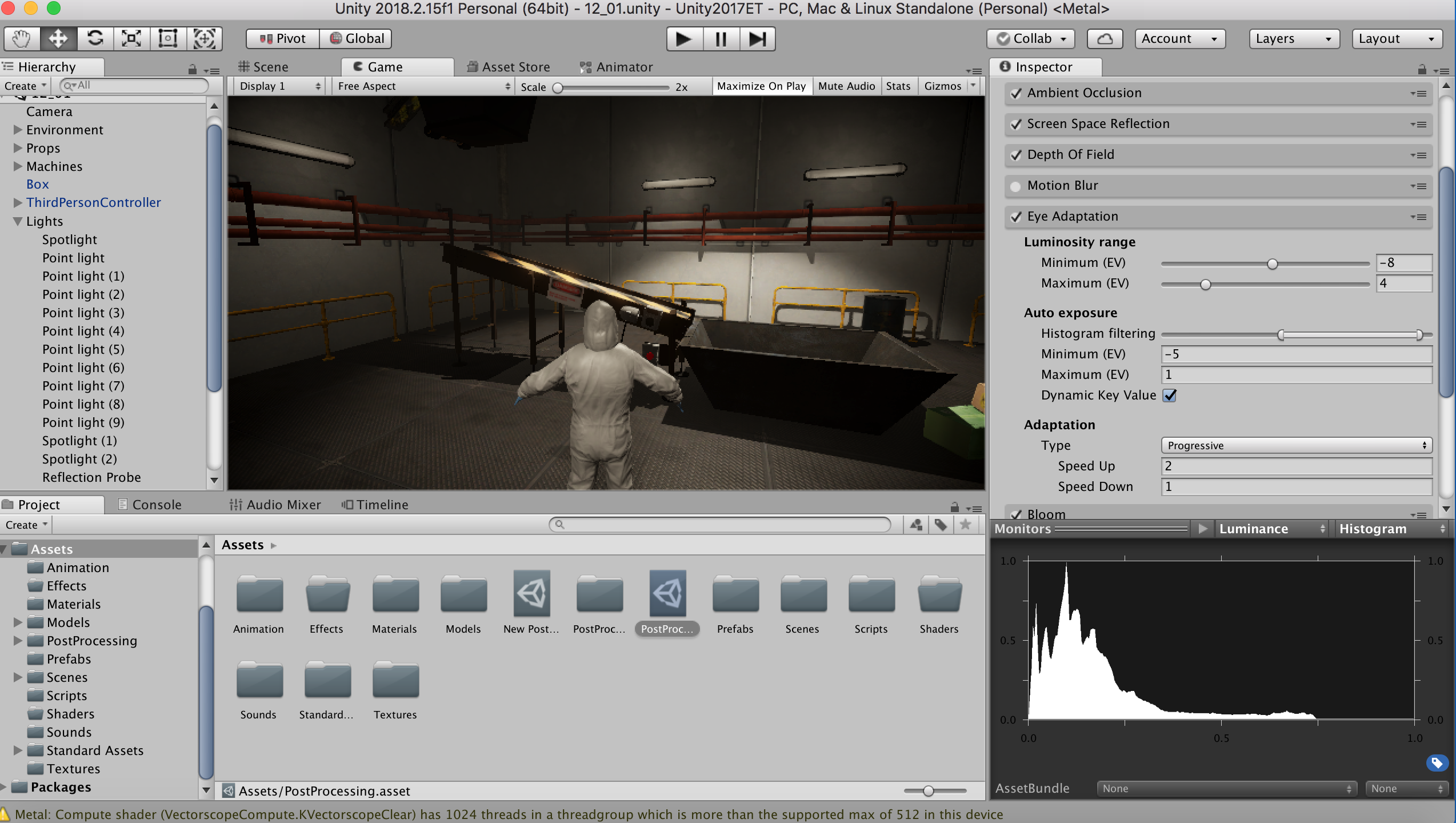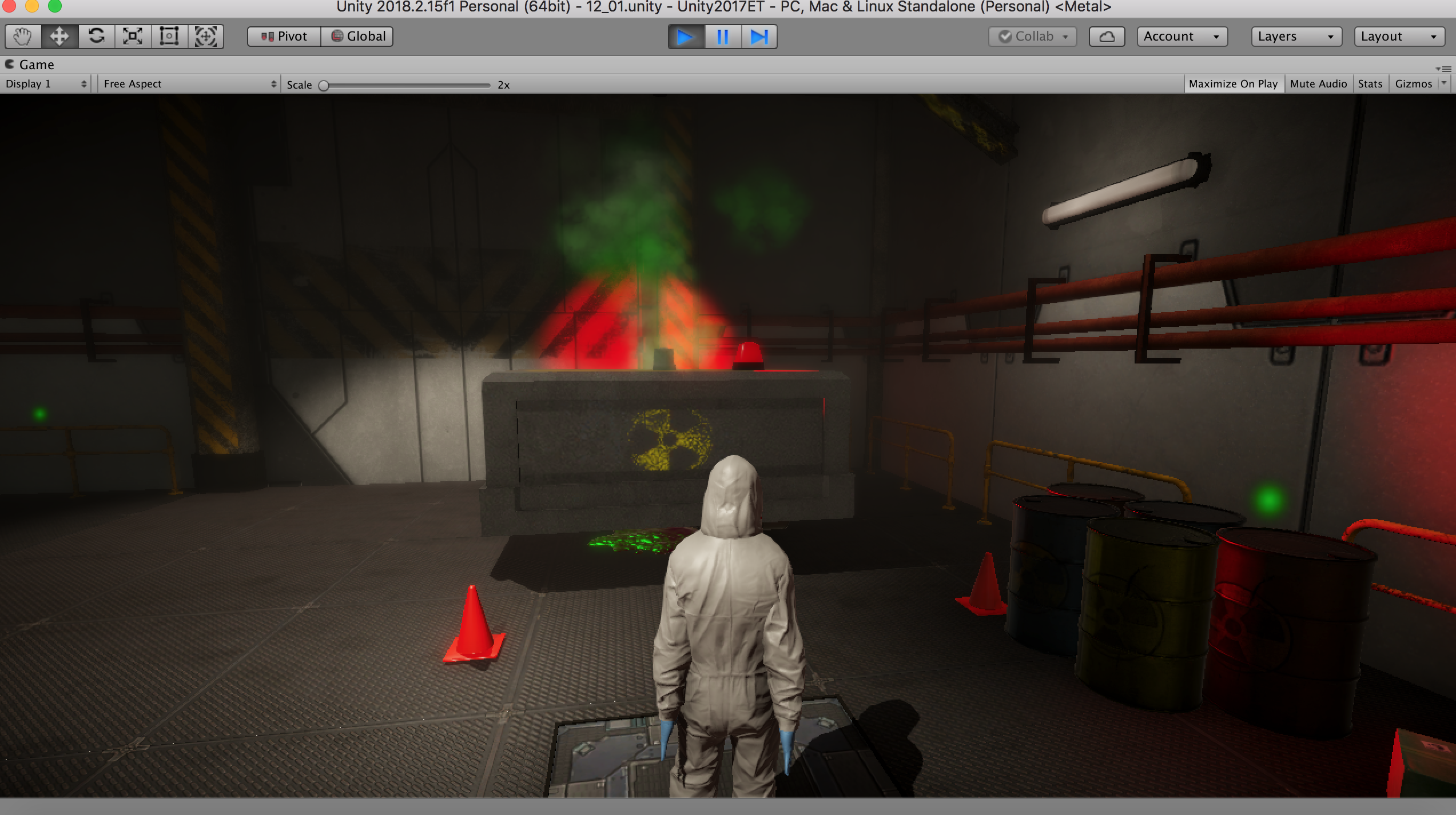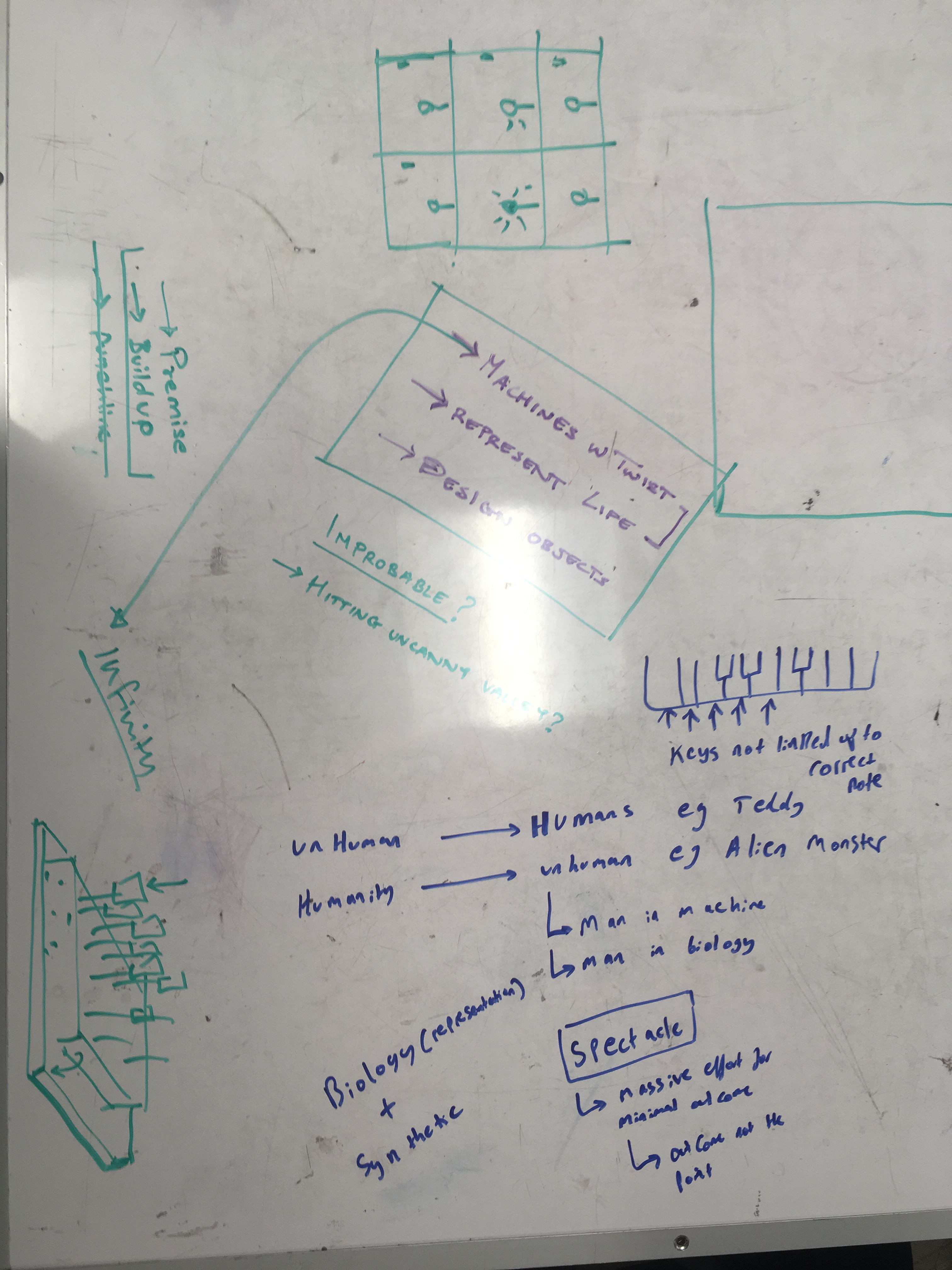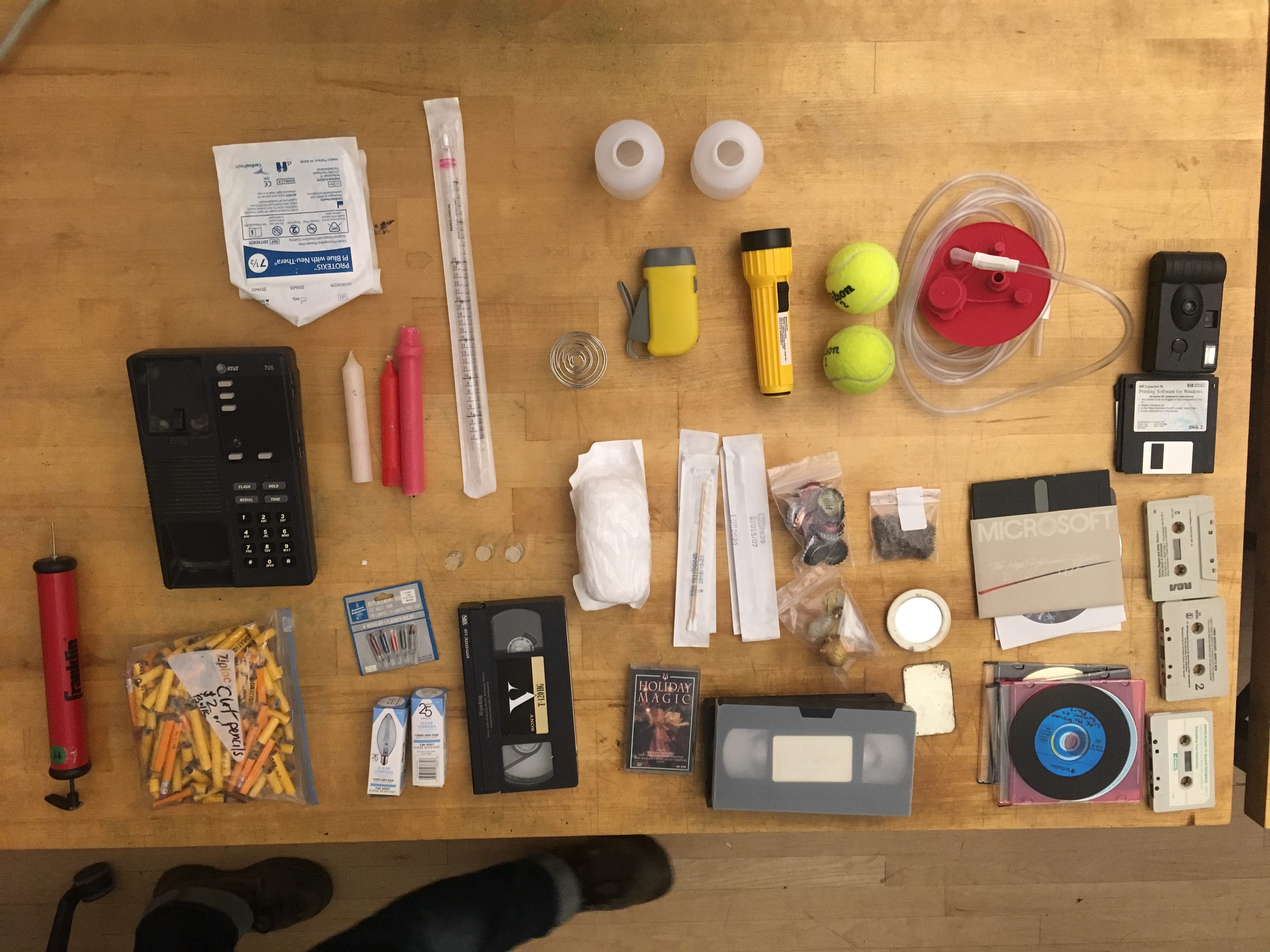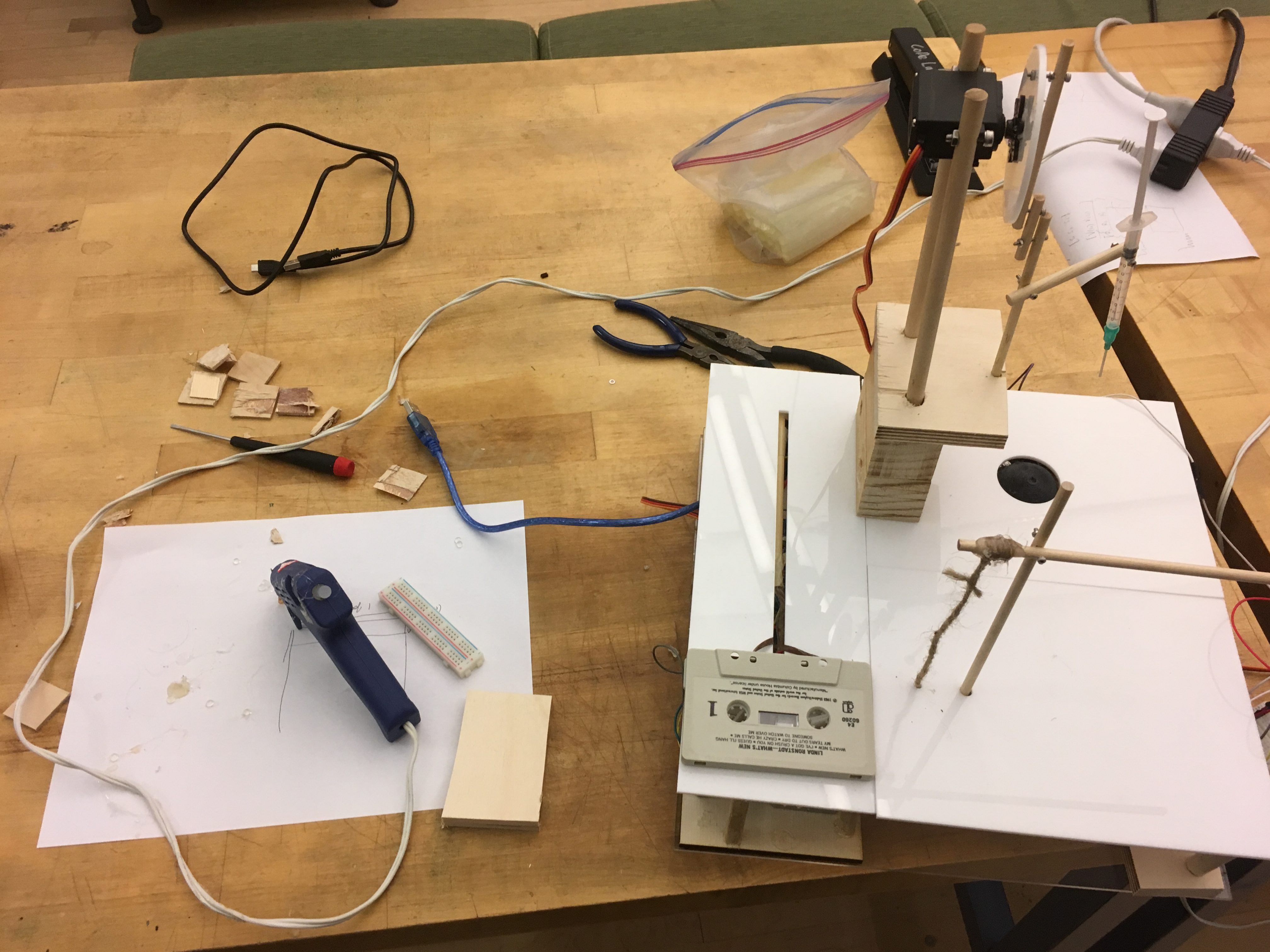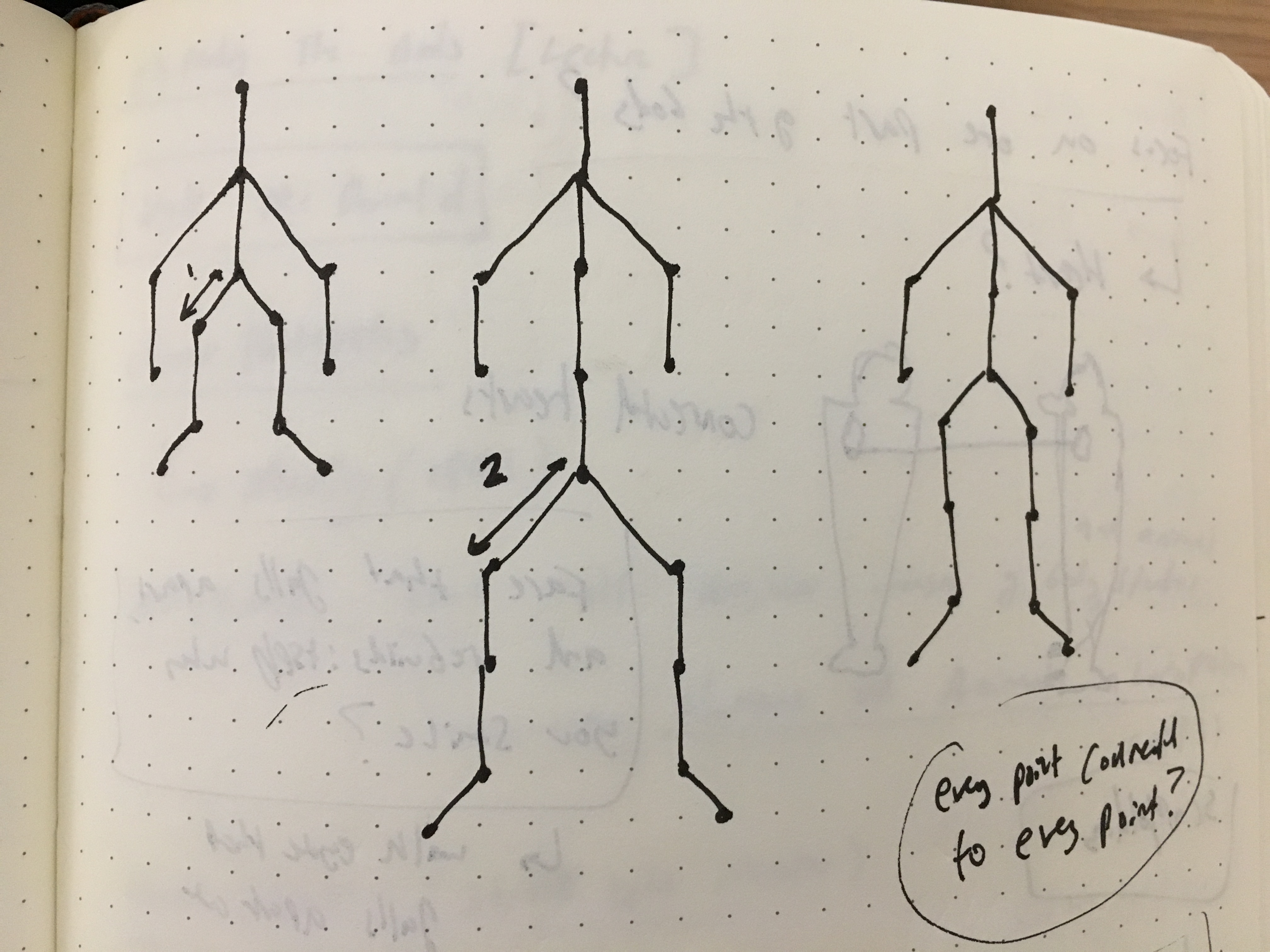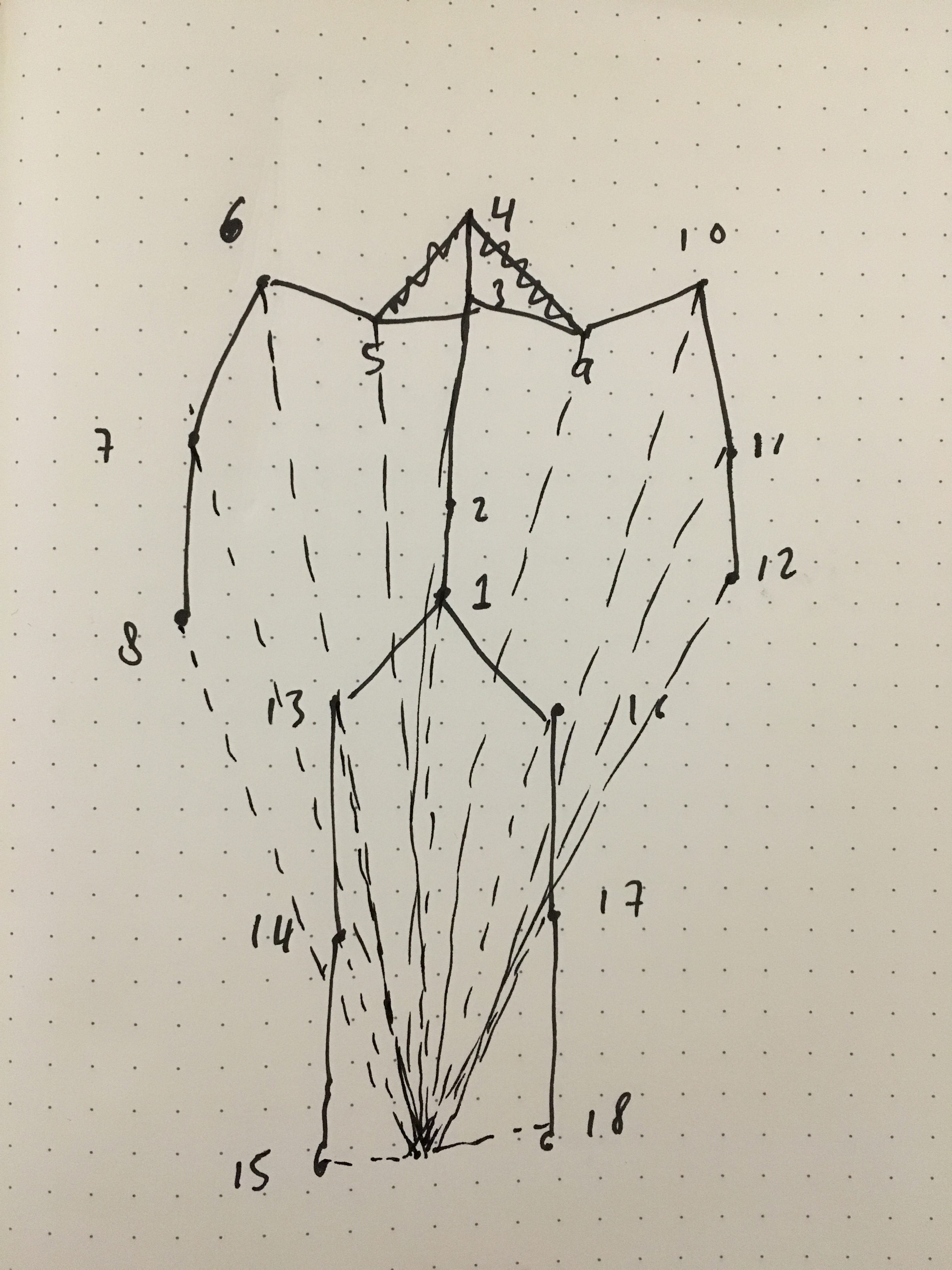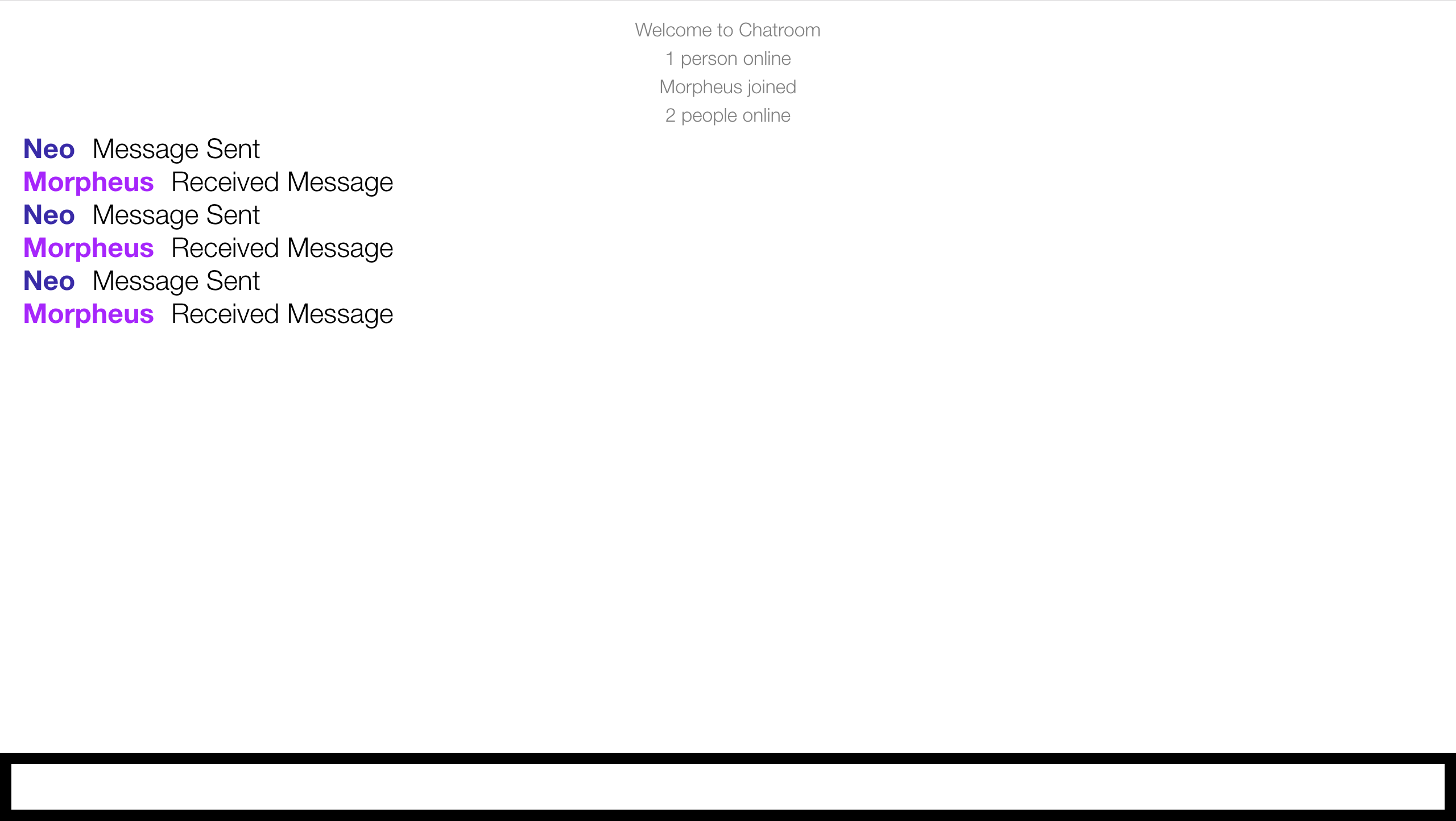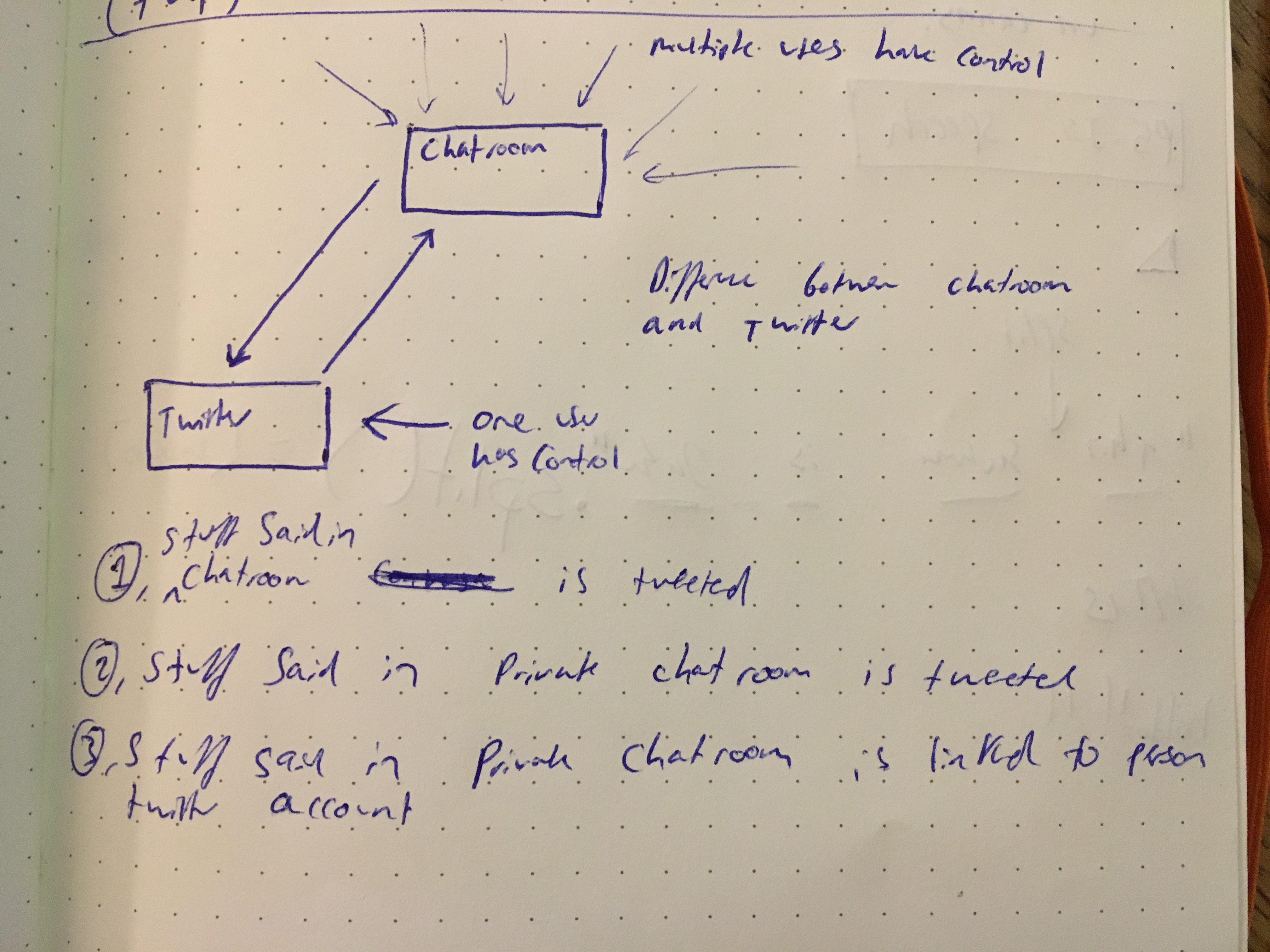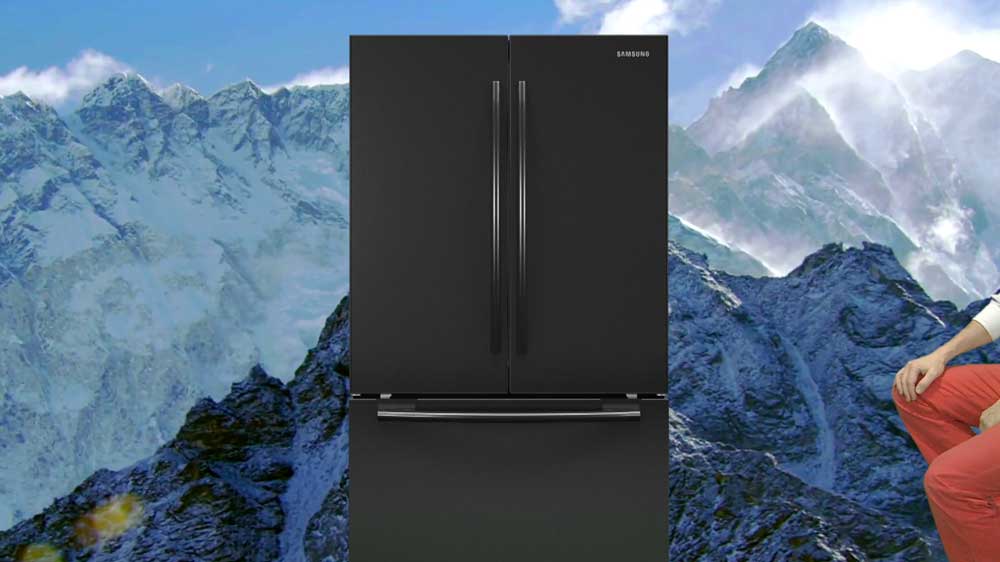// Based off of Template provided on 60212 Fall 2018 Website
// Renders a BVH file with Processing v3.4
// Note: mouseX controls the camera.
// Based off of com.rhizomatiks.bvh
// Golan Levin, September 2018
PBvh myBrekelBvh;
PBvh secondBrekelBvh;
PBvh thirdBrekelBvh;
PBvh fourthBrekelBvh;
PBvh fifthBrekelBvh;
boolean bDrawMeat = true;
boolean bDrawLineConnectingHands = false;
boolean bDrawCircleAtOrigin = false;
boolean bDrawLineToBoneInScreenspace = false;
float boneScreenX;
float boneScreenY;
int xCamera = 500;
int yCamera = 500;
int zCamera = 500;
int distance = 3200;
int distanceFinal = 4000;
int distanceWalkout = 4400;
//------------------------------------------------
void setup() {
size( 1280, 720, P3D );
// Load a BVH file recorded with a Kinect v2, made in Brekel Pro Body v2.
myBrekelBvh = new PBvh( loadStrings("walk_bold.bvh" ) );
secondBrekelBvh = new PBvh( loadStrings("walk-cycle.bvh") );
}
//------------------------------------------------
void draw() {
lights() ;
background(0, 0, 0);
pushMatrix();
setMyCamera(); // Position the camera. See code below.
//drawMyGround(); // Draw the ground. See code below.
updateAndDrawBody(); // Update and render the BVH file. See code below.
popMatrix();
drawHelpInfo();
drawLineToHead();
}
void keyPressed() {
switch (key) {
case 'M':
case 'm':
bDrawMeat = !bDrawMeat;
break;
case 'L':
case 'l':
bDrawLineConnectingHands = !bDrawLineConnectingHands;
break;
case 'O':
case 'o':
bDrawCircleAtOrigin = !bDrawCircleAtOrigin;
break;
case 'H':
case 'h':
bDrawLineToBoneInScreenspace = !bDrawLineToBoneInScreenspace;
break;
case 'w':
yCamera += 50;
break;
case 's':
yCamera -= 50;
break;
case 'd':
xCamera += 50;
break;
case 'a':
xCamera -= 50;
break;
case 'f':
zCamera += 50;
break;
case 'g':
zCamera -= 50;
break;
}
}
//------------------------------------------------
void updateAndDrawBody() {
pushMatrix();
translate(width/2, height/2, 0); // position the body in space
scale(-1, -1, 1); // correct for the coordinate system orientation
myBrekelBvh.update(millis()); // update the BVH playback
pushMatrix();
stroke(255, 0, 0);
//myBrekelBvh.draw(); // one way to draw the BVH file (see PBvh.pde)
popMatrix();
if (bDrawMeat) {
myBrekelBvh.drawBones(); // a different way to draw the BVH file
}
if (bDrawLineConnectingHands) {
drawLineConnectingHands();
}
if (bDrawCircleAtOrigin) {
drawCircleAtOrigin();
}
if (bDrawLineToBoneInScreenspace) {
myBrekelBvh.calculateScreenspaceLocationOfBone("Head");
}
popMatrix();
pushMatrix();
translate(width/2, height/2, 0); // position the body in space
scale(-1, -1, 1); // correct for the coordinate system orientation
myBrekelBvh.update(millis()); // update the BVH playback
pushMatrix();
stroke(255, 0, 0);
//myBrekelBvh.draw(); // one way to draw the BVH file (see PBvh.pde)
popMatrix();
if (bDrawMeat) {
secondBrekelBvh.drawBones(); // a different way to draw the BVH file
}
if (bDrawLineConnectingHands) {
drawLineConnectingHands();
}
if (bDrawCircleAtOrigin) {
drawCircleAtOrigin();
}
if (bDrawLineToBoneInScreenspace) {
secondBrekelBvh.calculateScreenspaceLocationOfBone("Head");
}
popMatrix();
}
//------------------------------------------------
void drawHelpInfo() {
fill(255);
float ty = 20;
float dy = 15;
//text("BVH Loader for Processing 3.4", 20, ty+=dy);
//text("Displays files recorded with Kinect v2 + Brekel Pro Body 2", 20, ty+=dy);
//text("", 20, ty+=dy);
//text("Press 'M' to toggle meat", 20, ty+=dy);
//text("Press 'L' to draw line connecting hands", 20, ty+=dy);
//text("Press 'O' to draw circle at Origin", 20, ty+=dy);
//text("Press 'H' to draw line from mouse to Head", 20, ty+=dy);
}
//------------------------------------------------
void drawLineToHead() {
if (bDrawLineToBoneInScreenspace) {
stroke(0, 255, 255);
strokeWeight(3);
line (mouseX, mouseY, boneScreenX, boneScreenY);
}
}
//------------------------------------------------
void drawCircleAtOrigin() {
fill(255);
stroke(255, 0, 0);
strokeWeight(4);
ellipse(0, 0, 20, 20);
}
//------------------------------------------------
void drawLineConnectingHands() {
// This example code shows how to reach into the skeleton
// in order to get specific joint locations (in 3D)
PVector[] boneLocationsFirst = new PVector[19];
PVector[] boneLocationsSecond = new PVector[19];
for (int i = 0; i < 19; i ++){
int currentIndex = i;
BvhBone currentBoneFirst = myBrekelBvh.parser.getBones().get(currentIndex);
PVector currentBonePosFirst = currentBoneFirst.absPos;
BvhBone currentBoneSecond = secondBrekelBvh.parser.getBones().get(currentIndex);
PVector currentBonePosSecond = currentBoneSecond.absPos;
boneLocationsFirst[i] = currentBonePosFirst;
boneLocationsSecond[i] = currentBonePosSecond;
}
for (int j = 0; j < 19; j ++){
for (int z = 0; z < 19; z ++){
PVector currentPosFirst = boneLocationsFirst[j];
PVector secondPosFirst = boneLocationsFirst[z];
PVector currentPosSecond = boneLocationsSecond[j];
PVector secondPosSecond = boneLocationsSecond[z];
stroke(255, 255, 255);
strokeWeight(1);
// Body Lines
pushMatrix();
if (j == 1) {
for (int a = 1; a < 4; a ++){
line( 7 * boneLocationsFirst[a].x, 7 * boneLocationsFirst[a].y, boneLocationsFirst[a].z + distance,
7 * boneLocationsFirst[a+1].x, 7 *boneLocationsFirst[a+1].y, boneLocationsFirst[a+1].z + distance);
}
}
if (j == 5) {
line( 7 * boneLocationsFirst[3].x, 7 * boneLocationsFirst[3].y, boneLocationsFirst[3].z + distance,
7 * boneLocationsFirst[5].x, 7 * boneLocationsFirst[5].y, boneLocationsFirst[5].z + distance);
for (int b = 5; b < 8; b ++){
line( 7 * boneLocationsFirst[b].x, 7 * boneLocationsFirst[b].y, boneLocationsFirst[b].z + distance,
7 * boneLocationsFirst[b+1].x, 7 * boneLocationsFirst[b+1].y, boneLocationsFirst[b+1].z + distance);
}
}
if (j == 9) {
line( 7 * boneLocationsFirst[3].x, 7 * boneLocationsFirst[3].y, boneLocationsFirst[3].z + distance,
7 * boneLocationsFirst[9].x, 7 *boneLocationsFirst[9].y, boneLocationsFirst[9].z + distance);
for (int c = 9; c < 12; c ++){
line( 7 * boneLocationsFirst[c].x, 7 * boneLocationsFirst[c].y, boneLocationsFirst[c].z + distance,
7 * boneLocationsFirst[c+1].x, 7 *boneLocationsFirst[c+1].y, boneLocationsFirst[c+1].z + distance);
}
}
if (j == 13) {
line( 7 * boneLocationsFirst[1].x, 7 * boneLocationsFirst[1].y, boneLocationsFirst[1].z + distance,
7 * boneLocationsFirst[13].x, 7 *boneLocationsFirst[13].y, boneLocationsFirst[13].z + distance);
for (int d = 13; d < 15; d ++){
line( 7 * boneLocationsFirst[d].x, 7 * boneLocationsFirst[d].y, boneLocationsFirst[d].z + distance,
7 * boneLocationsFirst[d+1].x, 7 *boneLocationsFirst[d+1].y, boneLocationsFirst[d+1].z + distance);
}
}
if (j == 16) {
line( 7 * boneLocationsFirst[1].x, 7 * boneLocationsFirst[1].y, boneLocationsFirst[1].z + distance,
7 * boneLocationsFirst[16].x, 7 *boneLocationsFirst[16].y, boneLocationsFirst[16].z + distance);
for (int e = 16; e < 18; e ++){
line( 7 * boneLocationsFirst[e].x, 7 * boneLocationsFirst[e].y, boneLocationsFirst[e].z + distance,
7 * boneLocationsFirst[e+1].x, 7 *boneLocationsFirst[e+1].y, boneLocationsFirst[e+1].z + distance);
}
}
/* translate(0, 0, distance);
ellipse(7 * boneLocationsFirst[4].x, 7 * boneLocationsFirst[4].y + 30, 20, 20); */
popMatrix();
////----------------------
pushMatrix();
if (j == 1) {
for (int a = 1; a < 4; a ++){
line( 8 * boneLocationsFirst[a].x, 8 * boneLocationsFirst[a].y, boneLocationsFirst[a].z + distanceFinal,
8 * boneLocationsFirst[a+1].x, 8 *boneLocationsFirst[a+1].y, boneLocationsFirst[a+1].z + distanceFinal);
}
}
if (j == 5) {
line( 8 * boneLocationsFirst[3].x, 8 * boneLocationsFirst[3].y, boneLocationsFirst[3].z + distanceFinal,
8 * boneLocationsFirst[5].x, 8 * boneLocationsFirst[5].y, boneLocationsFirst[5].z + distanceFinal);
for (int b = 5; b < 8; b ++){
line( 8 * boneLocationsFirst[b].x, 8 * boneLocationsFirst[b].y, boneLocationsFirst[b].z + distanceFinal,
8 * boneLocationsFirst[b+1].x, 8 * boneLocationsFirst[b+1].y, boneLocationsFirst[b+1].z + distanceFinal);
}
}
if (j == 9) {
line( 8 * boneLocationsFirst[3].x, 8 * boneLocationsFirst[3].y, boneLocationsFirst[3].z + distanceFinal,
8 * boneLocationsFirst[9].x, 8 *boneLocationsFirst[9].y, boneLocationsFirst[9].z + distanceFinal);
for (int c = 9; c < 12; c ++){
line( 8 * boneLocationsFirst[c].x, 8 * boneLocationsFirst[c].y, boneLocationsFirst[c].z + distanceFinal,
8 * boneLocationsFirst[c+1].x, 8 *boneLocationsFirst[c+1].y, boneLocationsFirst[c+1].z + distanceFinal);
}
}
if (j == 13) {
line( 8 * boneLocationsFirst[1].x, 8 * boneLocationsFirst[1].y, boneLocationsFirst[1].z + distanceFinal,
8 * boneLocationsFirst[13].x, 8 *boneLocationsFirst[13].y, boneLocationsFirst[13].z + distanceFinal);
for (int d = 13; d < 15; d ++){
line( 8 * boneLocationsFirst[d].x, 8 * boneLocationsFirst[d].y, boneLocationsFirst[d].z + distanceFinal,
8 * boneLocationsFirst[d+1].x, 8 *boneLocationsFirst[d+1].y, boneLocationsFirst[d+1].z + distanceFinal);
}
}
if (j == 16) {
line( 8 * boneLocationsFirst[1].x, 8 * boneLocationsFirst[1].y, boneLocationsFirst[1].z + distanceFinal,
8 * boneLocationsFirst[16].x, 8 *boneLocationsFirst[16].y, boneLocationsFirst[16].z + distanceFinal);
for (int e = 16; e < 18; e ++){
line( 8 * boneLocationsFirst[e].x, 8 * boneLocationsFirst[e].y, boneLocationsFirst[e].z + distanceFinal,
8 * boneLocationsFirst[e+1].x, 8 *boneLocationsFirst[e+1].y, boneLocationsFirst[e+1].z + distanceFinal);
}
}
/* translate(0, 0, distance);
ellipse(7 * boneLocationsFirst[4].x, 7 * boneLocationsFirst[4].y + 30, 20, 20); */
popMatrix();
// Points of body to backside origin
pushMatrix();
translate(0, 0, 2400);
line( 6 * currentPosFirst.x, 6 * currentPosFirst.y, currentPosFirst.z,
0, 0 , -400);
popMatrix();
// Points of body to backside origin
pushMatrix();
translate(0, 0, 3200);
line( 6 * currentPosFirst.x, 6 * currentPosFirst.y, currentPosFirst.z,
0, 0 , -400);
popMatrix();
//BaseLine
pushMatrix();
stroke(255);
line(
currentPosFirst.x + 10000, currentPosFirst.y, currentPosFirst.z - 400,
currentPosSecond.x - 10000, currentPosSecond.y, currentPosSecond.z - 400);
popMatrix();
//Lines extrapolating to one direction
pushMatrix();
stroke(255);
line(
currentPosFirst.x + 10, currentPosFirst.y, currentPosFirst.z,
currentPosFirst.x - 10, currentPosFirst.y, currentPosFirst.z);
popMatrix();
/* //Lines extrapolating to one direction
pushMatrix();
stroke(255);
line(
currentPosFirst.x + 50, currentPosFirst.y, currentPosFirst.z + 100,
currentPosFirst.x - 50, currentPosFirst.y, currentPosFirst.z + 100);
popMatrix();
//Lines extrapolating to one direction
pushMatrix();
stroke(255);
line(
currentPosFirst.x + 25, currentPosFirst.y, currentPosFirst.z + 200,
currentPosFirst.x - 25, currentPosFirst.y, currentPosFirst.z + 200);
popMatrix();
//Lines extrapolating to one direction
pushMatrix();
stroke(255);
line(
currentPosFirst.x + 10, currentPosFirst.y, currentPosFirst.z + 300,
currentPosFirst.x - 10, currentPosFirst.y, currentPosFirst.z + 300);
popMatrix();*/
//Lines in First Body
line(
2 * currentPosFirst.x, 2 * currentPosFirst.y, currentPosFirst.z + 400,
2 * secondPosFirst.z, 2 * secondPosFirst.y, secondPosFirst.z + 400);
for (int k = 0; k < 8; k ++){
//Tutu
float angle = map(k, 0, 8, 0, TWO_PI);
/*if (k % 2 == 0){
stroke(255, 0, 0);}
else{
stroke(0, 0, 255);}*/
stroke(255);
line(
3 * currentPosFirst.x, 3 * currentPosFirst.y, currentPosFirst.z + 800,
100 * cos(angle), 50, 100 * sin(angle) + 800);
/*line(
5 * currentPosSecond.x, 5 * currentPosSecond.y, currentPosSecond.z,
100 * cos(angle), 50, 100 * sin(angle));*/
pushMatrix();
/*if (k % 2 == 0){
stroke(0, 255, 0);}
else{
stroke(255, 0, 0);}*/
stroke(255);
line(
4 * currentPosFirst.x, 4 * currentPosFirst.y, currentPosFirst.z + 1600,
100 * sin(angle), (100 * cos(angle)), 100 * cos(angle) + 1200);
popMatrix();
/*pushMatrix();
translate(0, 0, 1200);
stroke(255, 0, 0);
ellipse(4 * currentPosFirst.x, 4 * currentPosFirst.y, 10, 10);
popMatrix();*/
/*pushMatrix();
translate(0, 0, 2000);
stroke(255);
ellipse(5 * currentPosFirst.x, 5 * currentPosFirst.y, 5, 5);
popMatrix(); */
/*pushMatrix();
translate(0, 0, 2000);
stroke(255, 0, 0);
ellipse(6 * currentPosFirst.x, 6 * currentPosFirst.y, 50, 50);
popMatrix();
pushMatrix();
translate(0, 0, 2000);
stroke(255, 0, 0);
ellipse(6 * currentPosFirst.x, 6 * currentPosFirst.y, 100, 100);
popMatrix(); */
/*pushMatrix();
stroke(255);
line(
4 * currentPosFirst.x, 4 * currentPosFirst.y, currentPosFirst.z + 600,
5 * currentPosFirst.x, 5 * currentPosFirst.y, currentPosFirst.z + 1000);
translate(0,0, 10000);
ellipse(currentPosFirst.x, currentPosFirst.y, 50, 50);
popMatrix(); */
}
}
}
}
/*pushMatrix();
if (k % 2 == 0){
stroke(0, 255, 0);}
else{
stroke(255, 0, 0);}
line(
currentPosFirst.x, currentPosFirst.y, currentPosFirst.z ,
100 * sin(angle), (100 * sin(angle)) + (100 * cos(angle)), 100 * cos(angle));
popMatrix();*/
//Lines extrapolating to one direction to Origin
/*pushMatrix();
if (k == 0){
stroke(0, 255, 0);}
else if (k == 1){
stroke(255, 0, 0);}
else {
stroke(0, 0, 255);}
translate(-(60*k), 0, 0);
line(
currentPosSecond.x + (60 * k), currentPosSecond.y, currentPosSecond.z,
0, 200, 200);
popMatrix(); */
//------------------------------------------------
void setMyCamera() {
// Adjust the position of the camera
float eyeX = 650; // x-coordinate for the eye
float eyeY = yCamera; //height/2.0f - 200; // y-coordinate for the eye
float eyeZ = mouseY * 8; // z-coordinate for the eye
float centerX = width/2.0f; // x-coordinate for the center of the scene
float centerY = height/2.0f; // y-coordinate for the center of the scene
float centerZ = -400; // z-coordinate for the center of the scene
float upX = 0; // usually 0.0, 1.0, or -1.0
float upY = 1; // usually 0.0, 1.0, or -1.0
float upZ = 0; // usually 0.0, 1.0, or -1.0
camera(eyeX, eyeY, eyeZ, centerX, centerY, centerZ, upX, upY, upZ);
}
//------------------------------------------------
void drawMyGround() {
// Draw a grid in the center of the ground
pushMatrix();
translate(width/2, height/2, 0); // position the body in space
scale(-1, -1, 1);
stroke(100);
strokeWeight(1);
float gridSize = 400;
int nGridDivisions = 10;
for (int col=0; col<=nGridDivisions; col++) {
float x = map(col, 0, nGridDivisions, -gridSize, gridSize);
line (x, 0, -gridSize, x, 0, gridSize);
}
for (int row=0; row<=nGridDivisions; row++) {
float z = map(row, 0, nGridDivisions, -gridSize, gridSize);
line (-gridSize, 0, z, gridSize, 0, z);
}
popMatrix();
} |
